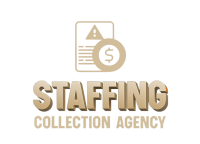In emergency staffing situations, dealing with non-payment can be a challenging and frustrating experience for companies. It is crucial to have a recovery system in place to ensure the collection of company funds and to navigate the complexities of non-payment scenarios effectively. This article discusses a comprehensive recovery system and provides recommendations for dealing with non-payment issues in emergency staffing situations.
Key Takeaways
- Implement a 3-phase Recovery System for efficient fund recovery in emergency staffing situations.
- Conduct a thorough investigation to assess the possibility of fund recovery before making decisions on closure or litigation.
- Consider closure if recovery is unlikely after investigation, with no financial obligation to the firm.
- Opt for litigation only after careful consideration, understanding the upfront legal costs and potential outcomes.
- Utilize competitive collection rates tailored to the age and amount of claims submitted for efficient fund recovery.
Recovery System for Company Funds
Phase One
Within the first 24 hours of initiating Phase One, a multi-pronged approach is launched to secure company funds. Immediate action is taken to ensure that the debtor is aware of the outstanding debt and the urgency of the situation. A series of four letters is dispatched via US Mail as a formal notice. Concurrently, skip-tracing and investigative measures are employed to gather the most up-to-date financial and contact information available.
The collection team engages in persistent outreach, utilizing phone calls, emails, text messages, and faxes to negotiate a resolution. Daily attempts are made over the initial 30 to 60 days to contact the debtor and achieve a settlement. Should these efforts not yield the desired results, the process seamlessly transitions to Phase Two, involving legal escalation.
The goal of Phase One is to establish clear communication and negotiate a resolution without delay. The swift and comprehensive approach is designed to maximize the chances of recovery before moving to more formal legal proceedings.
Phase Two
Upon escalation to Phase Two, the case is handed over to a local attorney within our network. This step intensifies the pressure on the debtor through a more formal and legal approach. The attorney undertakes the following actions:
- Drafts and sends a series of demand letters on law firm letterhead, explicitly stating the debt owed.
- Initiates direct contact with the debtor via phone calls, aiming to negotiate a settlement.
The goal is clear: to secure payment through persistent and professional legal communication. If these efforts do not yield results, we prepare for the final phase with a strategic plan tailored to the specifics of the case.
Phase Three
Upon reaching Phase Three, the path forward becomes clear. Two distinct recommendations emerge based on the investigation of the debtor’s assets and the likelihood of fund recovery.
- Closure of the case is advised when recovery seems improbable, ensuring no financial obligation to our firm or affiliated attorneys.
- Should litigation appear viable, a decision to pursue legal action is required. This entails upfront legal costs, typically between $600 to $700, which cover court and filing fees.
Once the lawsuit is filed, we seek to recover all monies owed, including legal costs. In the event that litigation does not result in collection, the case is closed without further charges.
Our competitive collection rates are structured as follows:
-
For 1-9 claims:
- Accounts under 1 year: 30%
- Accounts over 1 year: 40%
- Accounts under $1000: 50%
- Accounts with an attorney: 50%
-
For 10+ claims:
- Accounts under 1 year: 27%
- Accounts over 1 year: 35%
- Accounts under $1000: 40%
- Accounts with an attorney: 50%
Recommendations for Dealing with Non-Payment
Thorough Investigation
Before taking any action on non-payment, a thorough investigation is crucial. This step ensures that all facts are gathered and the debtor’s assets are assessed. It’s the groundwork for any subsequent recovery efforts.
- Review debtor’s financial status
- Assess assets and ability to pay
- Determine the likelihood of recovery
If the investigation reveals that recovery is unlikely, closure may be the most prudent course. However, if there’s a reasonable chance of recouping funds, litigation could be the next step. It’s essential to weigh the costs of legal action against the potential recovery.
The decision to litigate should be made after careful consideration of the investigation’s findings and the associated costs.
Remember, the goal is to recover funds efficiently. A staffing collection agency may be engaged to handle debt collection, and negotiation for payment arrangements should be attempted. Legal remedies, such as sending demand letters, are also available if necessary.
Recommendation for Closure
When the investigation concludes with a low likelihood of fund recovery, closure is the pragmatic step. Deciding to close the case absolves you from any further financial obligations to our firm or affiliated attorneys. This decision is critical when the cost of pursuing the debt outweighs the potential recovery.
Should you opt for closure, the following actions are taken:
- Withdrawal of the claim
- Cessation of collection activities (calls, emails, faxes)
- No additional fees incurred
It’s essential to weigh the financial implications and the probability of successful collection before proceeding with closure.
Our competitive collection rates are structured to align with the number of claims and their age. For instance, accounts under one year are charged at 30% of the amount collected for 1-9 claims, and 27% for 10 or more. The rates increase for older accounts and smaller amounts, reflecting the increased difficulty in collection.
Recommendation for Litigation
When all other avenues have been exhausted, litigation may be the final step to recover your funds. Deciding to proceed with legal action requires careful consideration of the potential costs and outcomes. If you choose to litigate, be prepared for upfront legal expenses, which can range from $600 to $700. These costs cover court fees, filing fees, and other related charges. Upon payment, our affiliated attorney will initiate a lawsuit to reclaim the owed amount, including the cost of filing the action.
Success in litigation is not guaranteed, and if efforts fail, the case will be closed with no additional fees owed to our firm or attorney. It’s crucial to weigh the likelihood of recovery against the expenses and potential impact on your business.
The decision to litigate should be made with a clear understanding of the financial implications and the probability of successful debt recovery.
Here’s a brief overview of our rates for collection services:
- Accounts under 1 year in age: 30% of the amount collected.
- Accounts over 1 year in age: 40% of the amount collected.
- Accounts under $1000.00: 50% of the amount collected.
- Accounts placed with an attorney: 50% of the amount collected.
These rates are competitive and tailored to the number of claims you submit. Remember, litigation is a serious step and should be considered as a last resort after all other recovery efforts have failed.
Struggling with unpaid invoices can be a major setback for any business. At Debt Collectors International, we understand the frustration and financial strain that comes with non-payment. Our expert team offers specialized solutions across all industries to help you recover what’s rightfully yours. Don’t let delinquent accounts disrupt your cash flow. Visit our website today for a free rate quote and learn how our no recovery, no fee services can assist you in getting paid without any upfront costs. Take the first step towards resolving your unpaid debts now!
Frequently Asked Questions
What is the Recovery System for Company Funds?
The Recovery System for Company Funds consists of three phases: Phase One involves sending letters to debtors, skip-tracing, and attempting to contact debtors. Phase Two includes forwarding the case to affiliated attorneys for legal action. Phase Three offers recommendations for closure or litigation based on investigation results.
How does Phase One of the Recovery System work?
Phase One includes sending letters to debtors, skip-tracing to obtain financial and contact information, and attempting to resolve the matter through various communication methods like phone calls, emails, and text messages. If unsuccessful, the case moves to Phase Two.
What happens in Phase Two of the Recovery System?
In Phase Two, the case is forwarded to a local attorney within the network. The attorney drafts letters demanding payment from the debtor and attempts to contact the debtor via phone calls. If all attempts fail, the next steps are recommended to the client.
What are the recommendations for dealing with non-payment?
The recommendations include conducting a thorough investigation, considering closure if recovery is unlikely, and deciding on litigation. In case of litigation, clients have the option to proceed with legal action or pursue standard collection activities.
What are the costs involved in litigation?
Clients opting for litigation will be required to pay upfront legal costs such as court fees and filing fees, ranging from $600.00 to $700.00. If the litigation is unsuccessful, clients owe nothing to the firm or affiliated attorney.
What are the collection rates for DCI based on the number of claims submitted?
DCI provides competitive collection rates based on the number of claims submitted. Rates vary for accounts under 1 year old, accounts over 1 year old, accounts under $1000.00, and accounts placed with an attorney.





